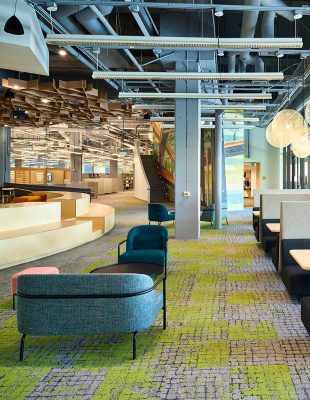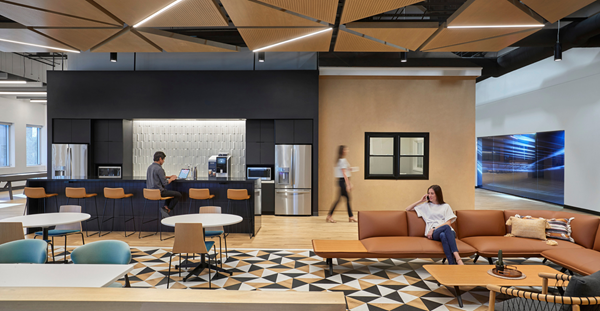Our relationship with work has changed significantly since the pandemic. While remote work continues to be an option for some, many people are returning to physical buildings with a set of expectations beyond the traditional office. These new norms can include a new balance between closed and open offices with adequate lighting and better boundaries. Clients and employees have come to understand that when it comes to work, one size does not fit all. To fulfill expectations and create an optimized workplace for employees, clients need a design strategy. And that requires a data-driven and evidence-based approach.
In the last five years, more than 150 peer-reviewed papers have been published globally with the focus on workplace Key Performance Indicators (KPIs) and design strategies. But until recently, there was no way to share this critical data with the people who need it most, designers and their clients.
In a new initiative, Arcadis has narrowed the results to the most relevant findings and created an interactive KPI-driven workplace design toolkit that bridges the gap between research findings and their applications in the architecture industry. To make this award-winning tool as user-friendly and practical as possible for clients, the first phase focuses on KPIs around productivity. The next iteration of the tool will spotlight additional areas including well-being, engagement, and neurodiversity. The available data will serve as a valuable resource for designers and clients to address an evolving landscape and design spaces where occupants can thrive.

How KPIs inform workplace design
Due to changes in the workplace post-COVID, clients and employees have become more knowledgeable and conscious about workplace design and how it impacts their lives. These changes have also inspired questions about the validity of design strategies that are proposed and implemented by architects. Clients and employees know that for a workplace to succeed, design solutions must be tailored to satisfy individual requirements.
Designers must also consider a mix of KPIs when developing a strategy. In the first phase of Arcadis’s KPI-driven workplace design toolkit, identified KPIs were divided into two categories: subjective KPIs, which reflect employees' perceptions of their workplace experience, and objective KPIs, which illustrate employees’ performance through cognitive tests and sensors. We focused solely on categories that designers have full control over such as lighting, sound, layout, and biophilia.
Overlooking KPIs and their connection to design strategies can be costly for businesses. We reviewed several studies that highlight how high noise levels can negatively affect concentration. For example, one peer-reviewed study shows that a workplace with a lack of quiet space will cost the business an estimated $670,000 USD annually per 100 people. Conversely, focus rooms have been shown to enhance workplace performance.1
Research findings in support of all four categories can help move projects in the right direction, creating a more profitable and productive environment for clients and their occupants.
Return to office backed by the latest research
Arcadis has designed a tool with an easy-to-use interface that can be an important resource for multiple groups. The tool helps internal design teams understand clients’ KPIs in workplace design, drives ideation and educates junior designers about workplace design strategies and their impacts on KPIs. It enables designers to provide support to marketing teams for proposals during the pursuit process, and in client and team meetings. The tool also aids the early stages of the design process by giving designers and clients confidence in their decisions. Arcadis is using the toolkit to educate its own designers on how to design an efficient, optimized workplace beneficial to its clients’ organizational goals, and employees’ experience in the workplace. This is the first step in what it means to design for work.
And we went a step further. To measure how the KPIs we’ve chosen are achieved by the design, Arcadis also developed a standardized and customizable workplace pre- and post-occupancy evaluation framework that clients and designers can easily use upon occupation. These tools facilitate the use of data-driven and evidence-based design in our industry, rather than assumptions, which improves architecture practices and help clients address new norms that meet employee expectations in the workplace.
Photos by Garrett Rowland and Weldon Brewster Photography.
Sources:
1. Jahncke, H., Hallman, D.M. (2020), “Objective measures of cognitive performance in activity-based workplaces and traditional office types”, Journal of Environmental Psychology 72: 101503.





